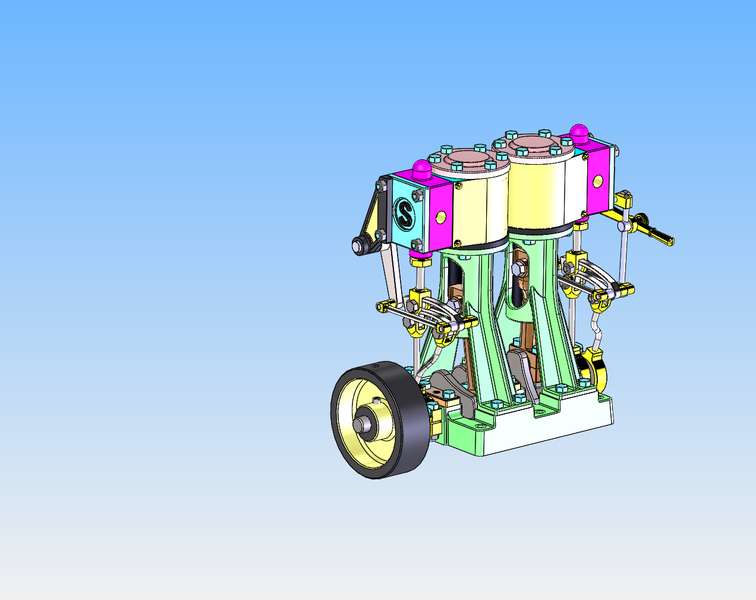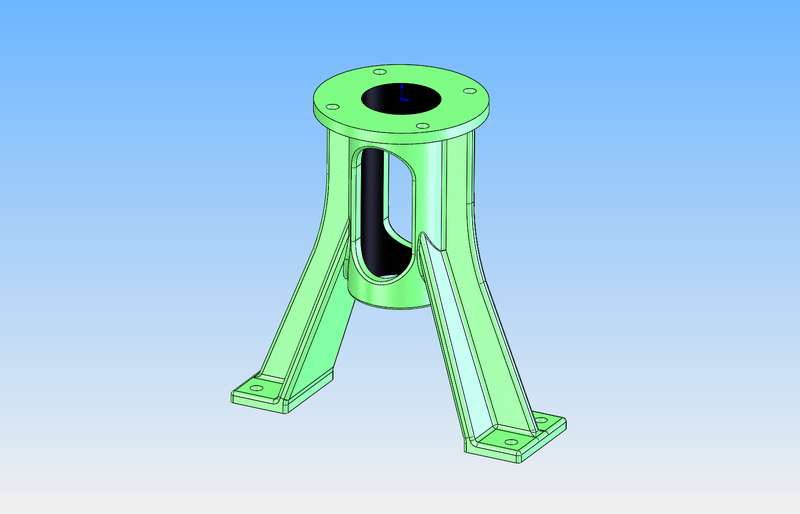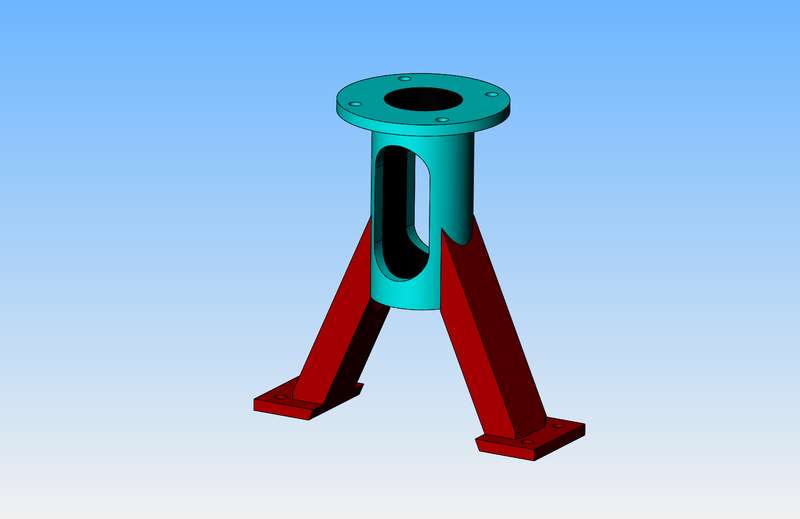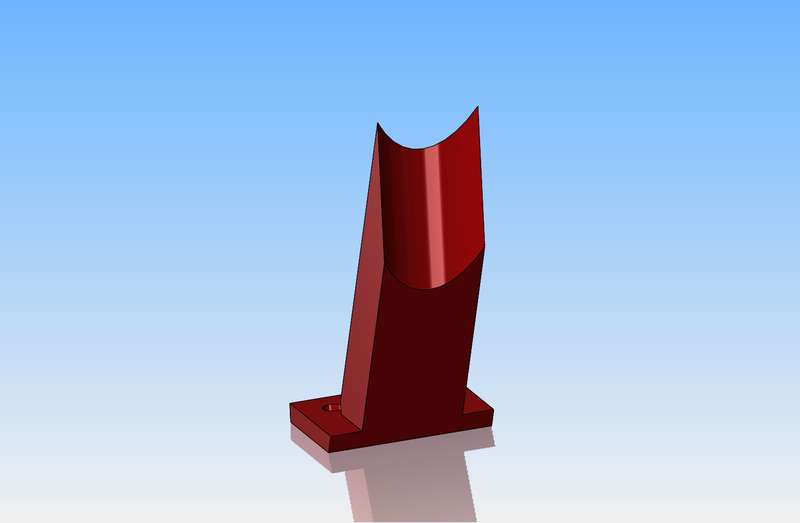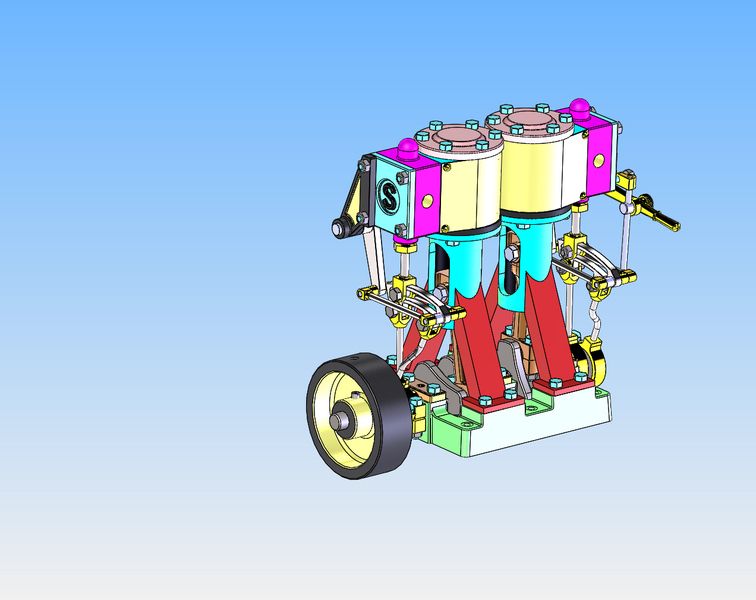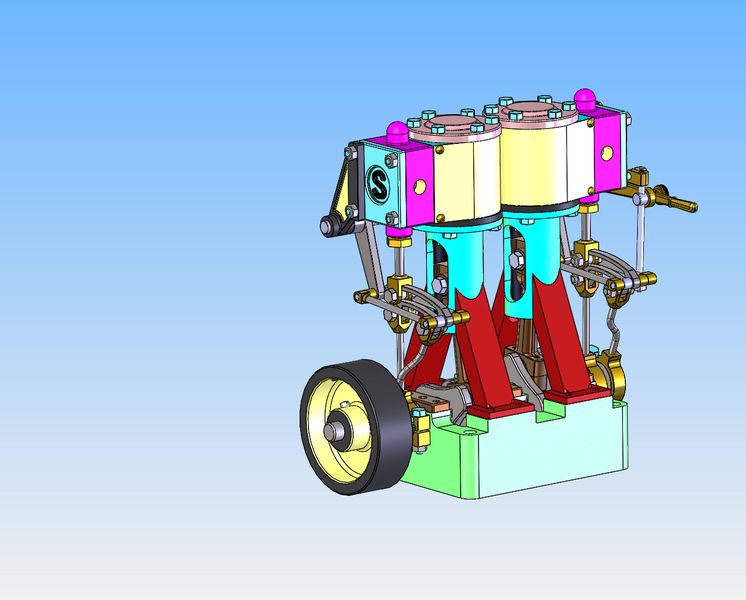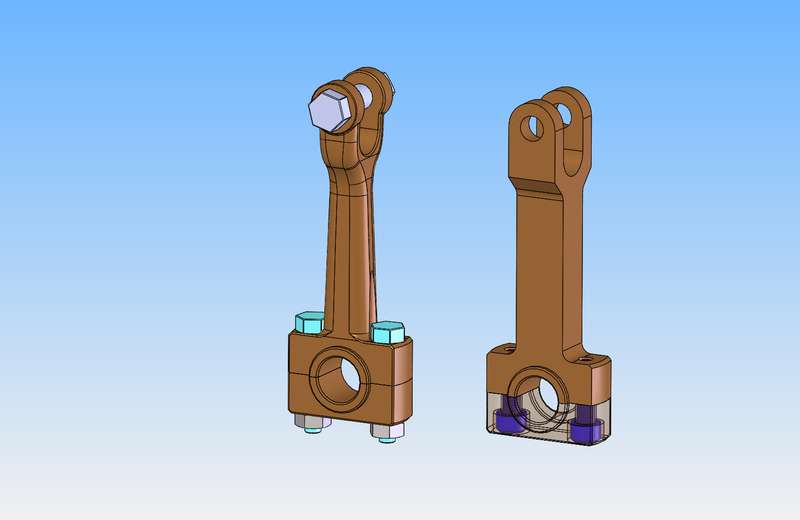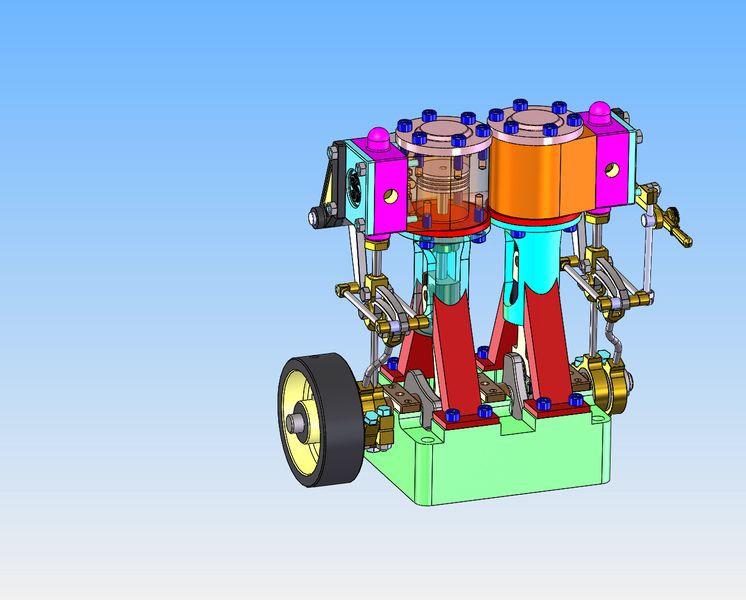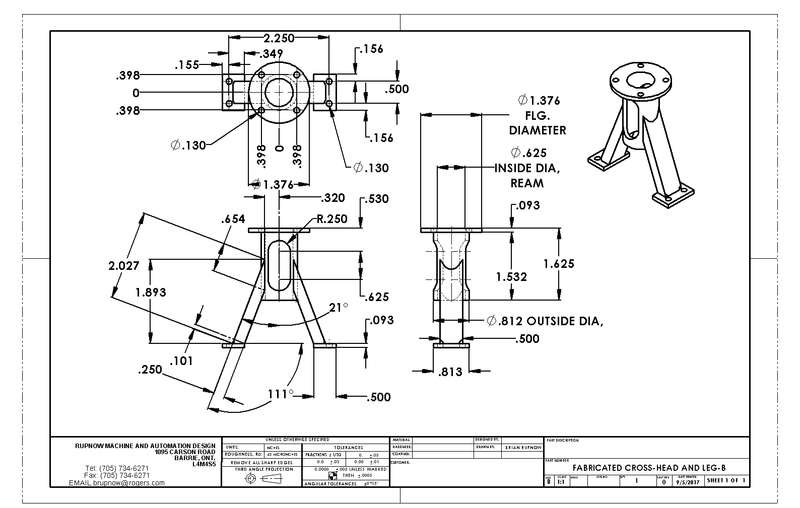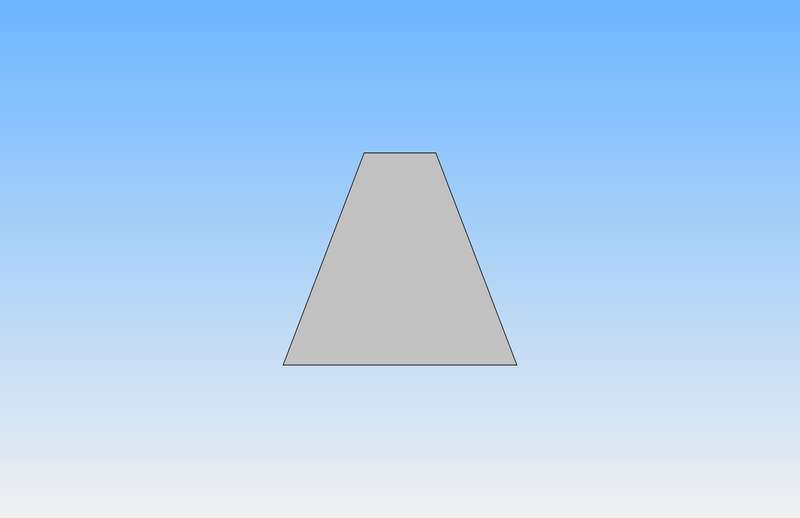I have always been intrigued by the Stephensons Link reversing mechanism that was used on some steam engines. While searching for information about it, I was directed to "GrabCad", a site where 3D models can be downloaded free of charge. There is a complete and very detailed model of a small two cylinder steam engine, 3/4" bore x 3/4" stroke, with the reversing mechanism on it. It is quite a lovely model, and it is obvious that many of the major components are castings. This afternoon I have been playing on my CAD system to see what would be involved in making this engine from bar stock. This is what the engine looks like as downloaded.
